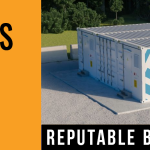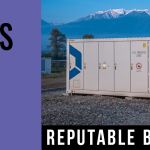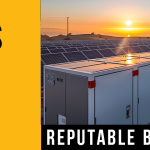 As renewable penetration grows, the need for energy storage grows as well. However, existing storage technologies may not be able to meet that need.
As renewable penetration grows, the need for energy storage grows as well. However, existing storage technologies may not be able to meet that need.
A Department of Energy (DOE) grant program aims to address that problem by trading efficiency for low cost.
Existing storage technologies fall short in terms of duration. Lithium-ion batteries, which have captured about 90% of the energy storage market, can economically run for about four hours. Pumped hydro storage, which accounts for the most energy storage today in terms of capacity, can generate power by releasing water from storage reservoirs for up to 20 hours under certain conditions.
But as renewable energy penetration reaches and surpasses 50%, the need for even longer durations will grow.
The sunny forecast for storage demand
The need for longer durations is particularly applicable to areas where solar power dominates the resource mix.
In a future where 70% of power is generated by solar panels, it is easy to imagine a scenario where a couple of cloudy days in a row could create a gap in meeting customer demand, Michael Jacobs, senior energy analyst at the Union of Concerned Scientists, told Utility Dive.
Filling that gap is the aim of a program at the DOE that is providing funding for technologies that can extend energy storage durations to up to 100 hours.
Last month, the DOE’s Advanced Research Projects Agency-Energy (ARPA-E) awarded just over $28 million to 10 projects that aim to push the limits of energy storage duration. ARPA-E’s Duration Addition to electricitY Storage (DAYS) program aims to push the duration of energy storage systems out to 100 hours.
One hundred hours, just a little more than four days, is an exponential leap from current durations but the role of ARPA-E is to focus on early stage technologies that are not yet commercial or quite ready for the private sector.
read more
 SARATOGA SPRINGS — On Sept. 26 Key Capture Energy LLC, held a groundbreaking ceremony for the KCE NY 1 facility. The KCE NY 1 facility is a 20 megawatt (MW) utility-scale battery storage project, located at the Luther Forest Technology Campus. The Groundbreaking took place at 30 Substation Rd. in Saratoga Springs.
SARATOGA SPRINGS — On Sept. 26 Key Capture Energy LLC, held a groundbreaking ceremony for the KCE NY 1 facility. The KCE NY 1 facility is a 20 megawatt (MW) utility-scale battery storage project, located at the Luther Forest Technology Campus. The Groundbreaking took place at 30 Substation Rd. in Saratoga Springs. CPS Energy recently broke ground on their first solar energy and battery storage project in Texas.
CPS Energy recently broke ground on their first solar energy and battery storage project in Texas. We know energy storage is coming. The question is: How much and how fast? Tesla showed us that they’d rather build cars versus energy storage installations, and that makes sense since more than 90% of their revenue is from cars. And Bloomberg recently reminded us that the whole of the industry is in a situation of greater demand than supply. Nonetheless, the potential is there and the manufacturing capacity is growing immensely.
We know energy storage is coming. The question is: How much and how fast? Tesla showed us that they’d rather build cars versus energy storage installations, and that makes sense since more than 90% of their revenue is from cars. And Bloomberg recently reminded us that the whole of the industry is in a situation of greater demand than supply. Nonetheless, the potential is there and the manufacturing capacity is growing immensely. Global energy technology giant Siemens plans to acquire Massachusetts-based Russelectric, a move likely to strengthen Siemens position in state’s increasingly fertile microgrid market.
Global energy technology giant Siemens plans to acquire Massachusetts-based Russelectric, a move likely to strengthen Siemens position in state’s increasingly fertile microgrid market. Investment management firm Gresham House is to float an energy storage fund on the London Stock Exchange next month, with an aim to raise £200 million (US$260 million) to fund 262MW of energy storage projects over the next year.
Investment management firm Gresham House is to float an energy storage fund on the London Stock Exchange next month, with an aim to raise £200 million (US$260 million) to fund 262MW of energy storage projects over the next year.



